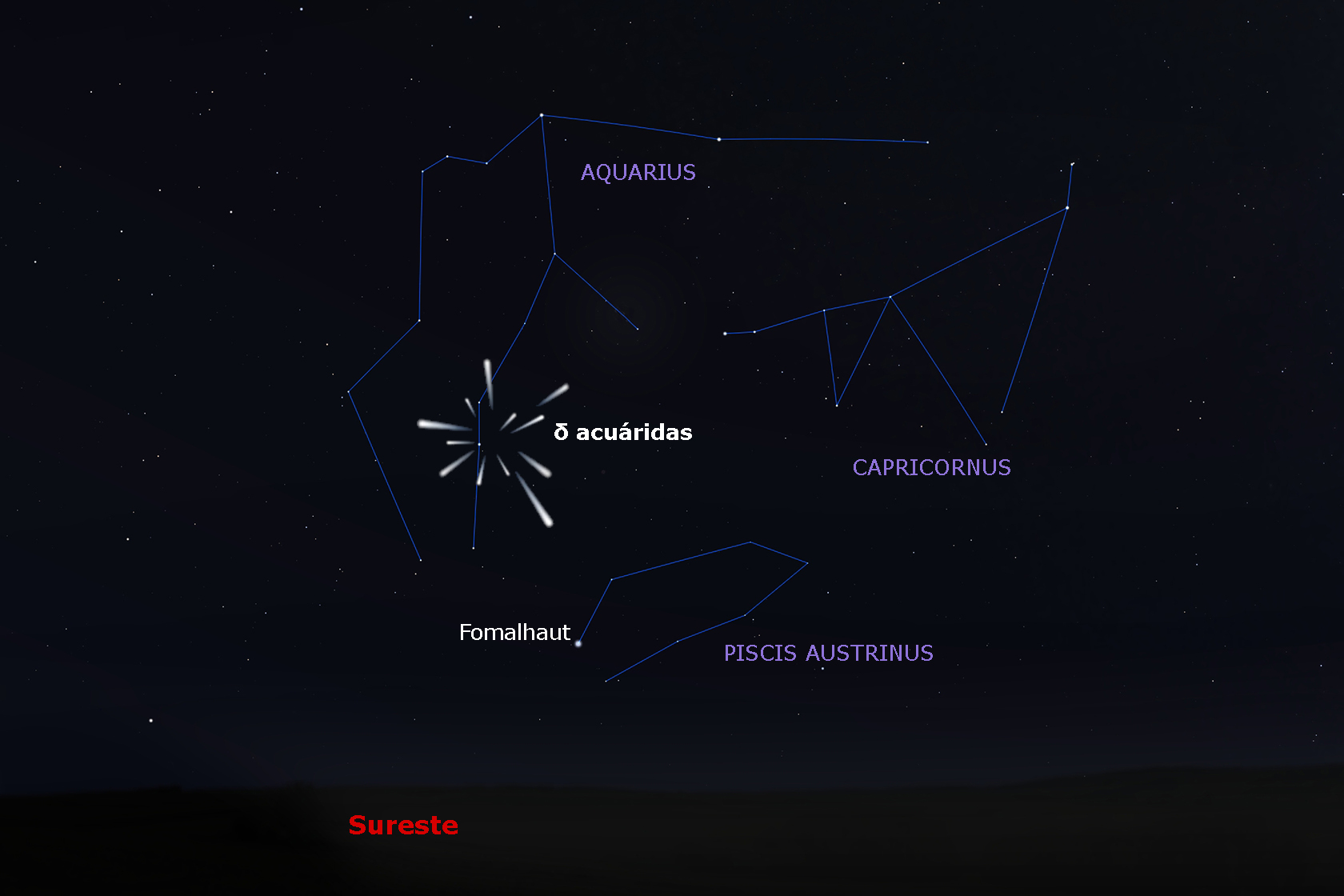Delta acuáridas
La lluvia de meteoros de las delta acuáridas nos visita todos los años entre el 12 de julio y el 23 de agosto, alcanzando su máximo en torno al 30 de julio.
Los meteoros de las delta acuáridas se observan mejor en el hemisferio sur porque su radiante está más alto en el cielo, pero también son visibles en el hemisferio norte con una tasa de actividad algo más baja.
Para observadores a nuestras latitudes, 40º norte, el radiante de las delta acuáridas se sitúa por encima del horizonte a partir de la medianoche hasta el amanecer.
¿Qué se espera en 2025?
Esta lluvia tiene un pico muy extendido en torno al 31 de julio de 2025, por lo que tanto la noche del 30 al 31 como la siguiente serán adecuadas para su visión. La Luna, muy próxima al cuarto creciente, hará que las observaciones sean más propicias después de la medianoche, cuando además el radiante de la lluvia irá subiendo por el cielo.

El 'radiante' de las delta acuáridas.
¿Por qué suceden?
Se piensa que los meteoros de las delta acuáridas pueden provenir del cometa 96P Machholz, un cometa de corto periodo que orbita alrededor del Sol cada 5 años aproximadamente. Las lluvias de meteoros suceden cuando nuestro planeta se cruza con el camino orbital de un cometa. Esta órbita está llena de partículas de la cola del cometa, que entran en la atmósfera terrestre a gran velocidad, y se calcina por la fricción con el aire, creando así el resplandor luminoso que conocemos como meteoro o estrella fugaz.
La correspondiente lluvia de meteoros parece tener un único centro de origen, un punto del que parecen surgir todas las estrellas fugaces. Ese punto se denomina "radiante" y su localización se utiliza para nombrar a la lluvia de estrellas. Así pues, las delta acuáridas tienen su radiante en la estrella delta, denominada como Skat, de la constelación de Acuario.
¿Qué hacer para ver las delta acuáridas?
El lugar de observación puede ser cualquiera con tal de que proporcione un cielo oscuro. Es preferible observar desde un lugar que tenga pocos obstáculos para la vista (como edificios, árboles o montañas), y no utilizar instrumentos ópticos que nos limiten el campo de visión. Aunque las delta acuáridas parecen venir de la constelación de Acuario (de ahí su nombre), se pueden ver en cualquier parte del cielo. Conviene dirigir la mirada hacia las zonas más oscuras, en la dirección opuesta a la posición de la Luna si la observación se realiza cuando esta esté presente. Lo más cómodo es tumbarse y esperar a que la vista se acostumbre a la oscuridad.

